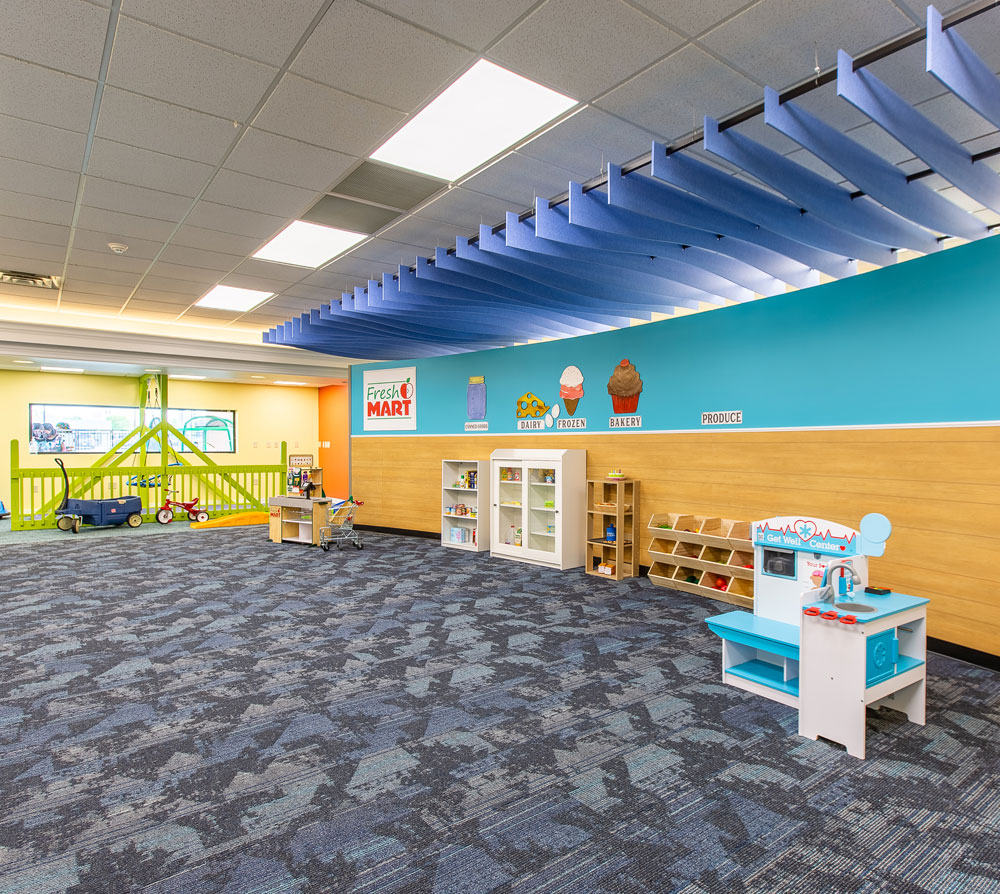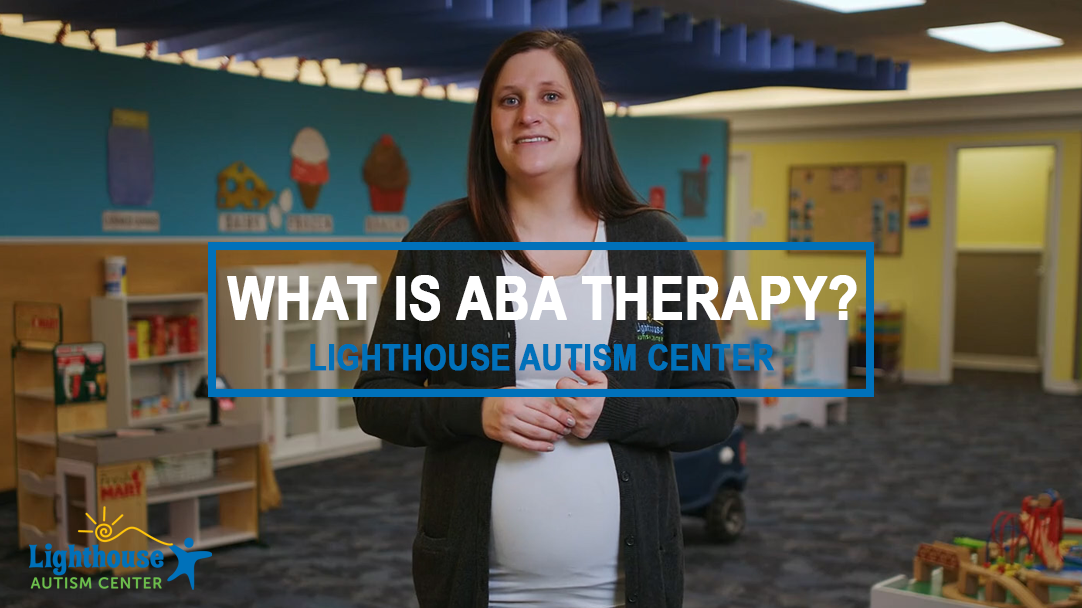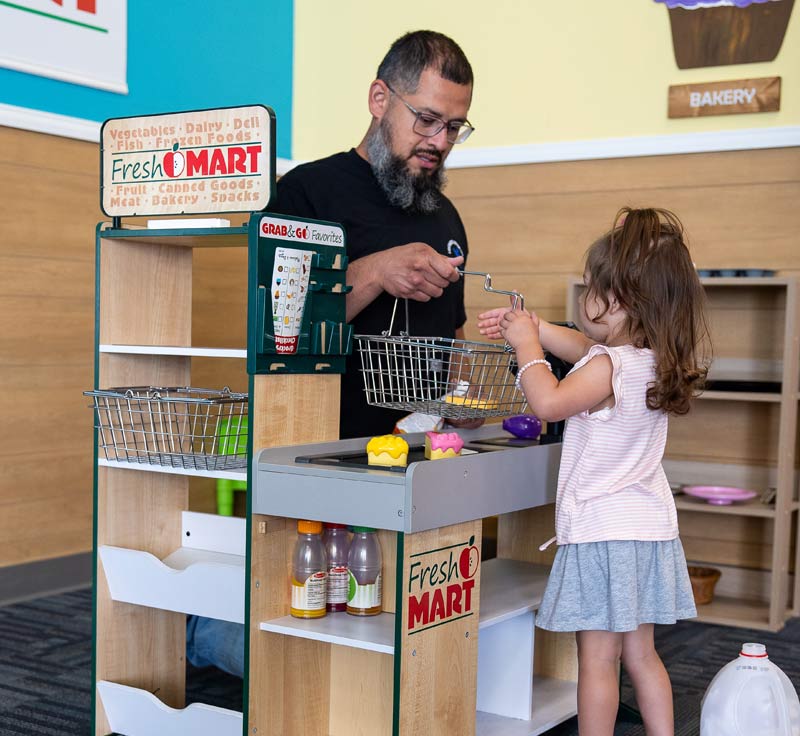ABA THERAPY SERVICES
What is Applied Behavior Analysis (ABA)?
Applied Behavior Analysis (ABA) therapy focuses on the principles and techniques of learning theory to help increase or decrease certain behaviors. ABA therapy is a scientifically validated approach to understanding learning and behavior by looking at the function of the behavior and the environment in which it occurs.
ABA autism therapy looks at a particular behavior, studies the purpose behind it to understand under what circumstances it occurs, and then uses various techniques such as positive reinforcement to change it, teach a new behavior, or find a more functional way of doing it.
ABA therapy is the “gold standard” autism therapy; it is the only evidence-based therapy proven to improve an autistic child’s functional capability in their early stages of life, providing a foundational impact for the rest of their life.
Today, ABA is the only therapy endorsed by the U.S. Surgeon General as an effective treatment for autism. It is also endorsed by several other state and federal agencies, physicians, and advocates in the autism community.
-
 Ages 2-17
Ages 2-17
-
 Flexible Scheduling
Flexible Scheduling
-
 Medicaid & Commercial Accepted
Medicaid & Commercial Accepted
ABA Therapy at Lighthouse Autism Center
At Lighthouse Autism Center, learners receive high-quality ABA therapy in a nurturing, play-based environment. Through our unique Lighthouse Fusion™ ABA therapy model—which integrates speech support seamlessly throughout the ABA therapy day. Learners are empowered to make faster, more meaningful progress. Each child benefits from individualized 1:1 support provided by a dedicated Registered Behavior Technician, all within a setting designed to foster engagement, growth, and joy through play.
Lighthouse Centers are state-of-the art and designed to immerse our Learners in imaginary spaces where they can naturally explore their interests, engage in sensory experiences, and practice language, skill development, peer interaction and behavior management. Each child’s progress can be seen in smiles and laughter because we know children learn best when having fun.
We specialize in Center-Based ABA Therapy, providing a structured and controlled environment that allows for focused, consistent, and individualized treatment. While some families may choose In-Home ABA Therapy, our center-based approach offers unique benefits that supports Learners to reach their optimal potential.
Key Benefits of Center-Based ABA Therapy:
While both center-based and in-home therapy can be helpful, our center-based approach provides a comprehensive, controlled environment where learners can thrive and receive the full benefit of ABA therapy.
At Lighthouse Autism Center, we believe each child has unique and unlimited potential; and we are committed to bringing compassionate care and clinical excellence together to unlock that potential and help each child achieve their optimal functioning.
- Lighthouse Autism Center has designed spaces to maximize a happy, positive environment and learner-directed engagement and skill development. The center is equipped with a large variety of sensory tools, therapeutic materials and simulated learning environments, which can be utilized to support each child’s individualized therapy plan and goals. Coupling learner-directed play with 1:1 therapist guidance, utilizing the rich variety of environmental engagement tools and techniques, continual progression is attained toward the learner’s therapy goals.
- Safe “Playground” Equipment: From a trampoline to a large swing – and more – Learners have the opportunity for a wide range of fun experiences every day, and we can help prepare them for successful new experiences within a positive framework.
- One key benefit of center-based therapy is the opportunity for Learners to interact with their peers. Social skills and personal containment are an important part of child development, and our Learners have the chance to develop and practice community social skills such as communication, engaging in cooperative play, sharing, taking turns, and emotional regulation, which can be guided in a comfortable, supportive environment.
- Higher Frequency of Therapy: Center-based therapy has been shown to lead to better outcomes than home-based therapy alone, because the Learner can receive more hours of therapy at a greater intensity. More time in therapy sessions and a consistent routine generally leads to more significant progress.
- Focus on Skill Building: Center-based therapy allows for the opportunity to work on not only academic readiness and skills, but also social, emotional, and daily living skills, which are essential for long-term independence and integration.
- Our team includes Board Certified Behavior Analysts (BCBAs), Dually Certified Speech Language Pathologist (SLP)/BCBAs and Registered Behavior Technicians (RBTs) with extensive training in autism therapy. Direct supervision, professional guidance and collaboration is a routine part of the staff’s day-to-day work.
- Our Centers are stocked with a large variety of specialized resources and materials – which isn’t feasible to provide in an in-home setting – including tools for communication, sensory regulation, and learning, which are tailored to the specific needs of children with autism.
Several therapists regularly work with each Learner, who benefits from more diverse interaction and professional expertise.
- Parent and Family Support: supporting and teaching parents and families is important because we know that Learners are most successful when their families and caregivers are involved in the therapy process. And families are often eager to learn more about how to support their child’s growth outside of therapy sessions.
- Lighthouse professionals can help families by guiding “first experiences” or other external appointments, such as dentist, haircut, pediatrician, and other public outings – to help parents and guardians learn how to help guide their child’s experiences.

Lighthouse Autism Center Provides:
- Center-based, comprehensive and focused ABA therapies for Learners in early childhood and pediatric ages, focusing on early intervention (as early as 2 years of age).
- We provide face-to-face direct services, along with some telehealth support, as appropriate and available.
Comprehensive ABA Therapy is an intensive, broad-based treatment that addresses a wide range of skills and behaviors. It typically involves working on multiple areas, such as communication, social skills, daily living skills, and behavior management, and is designed for individuals who may benefit from more extensive intervention. This therapy is often recommended for younger children or those with more complex needs who require a comprehensive approach to support their overall development.
Focused ABA Therapy is a more targeted approach that concentrates on specific behaviors or skill sets. It is ideal for individuals who have already made significant progress in their development but need additional support in certain areas, such as improving communication, reducing problematic behaviors, or enhancing social interactions. This therapy allows for more concentrated and efficient treatment of identified needs.
Both therapies are grounded in the principles of ABA and are tailored to meet the individual goals and strengths of each learner, ensuring the best possible outcomes in their development.
At Lighthouse Autism Center, our team of experienced professionals works closely with families to determine which approach is the most appropriate for their child’s unique needs.
How ABA Therapy Benefits Children with Autism
ABA Therapy principles have been applied since the early 1960s to both children and adults with various developmental diagnoses. Since then, there has been an evolution and improvement in the therapy techniques used in ABA; however, the core teaching of ABA has stayed the same. ABA is scientifically validated and data-driven and consistently shows the best outcomes for children with autism.
ABA therapy helps to (1) develop new skills, (2) shape and refine previously learned skills, and (3) decrease socially significant problem behaviors.
ABA autism therapy is incredibly effective in helping children with autism gain new skills. For example, if a child’s parent and clinical team determine that a goal for the child is to become potty trained, this would take place over a period of time and involve several steps. The child may start by simply sitting on the toilet at regular intervals, even if they don’t go. Once that step is mastered, the child might learn to recognize and communicate the need to use the bathroom. The next step might involve independently pulling down their pants before sitting on the toilet. This process would continue until the child is able to independently recognize the need to go, use the toilet appropriately, clean themselves, and wash their hands. These steps will be different for every child, but the concept is the same: start at the beginning and give the child the building blocks to complete the new skill independently.
Shaping communication involves gradually refining existing behaviors into more functional, effective skills. In the context of Applied Behavior Analysis (ABA), shaping is often used to support communication development—especially when a child has a basic way of expressing themselves that can be built upon.
For example, a child might initially communicate their wants by crying or physically guiding a caregiver to an object. While this behavior does communicate a need, it’s not always effective or sustainable in different settings. Through shaping, a behavior analyst can guide the child through small, manageable steps toward a more functional form of communication.
Let’s say a child wants a snack. Rather than pulling an adult toward the pantry, the child may first learn to point to the desired item. With continued support, this skill can be expanded. We may start by teaching the child to hand over a picture of the snack or select it on an Augmentative and Alternative Communication (AAC) device. Over time, these shaped steps can lead to more complex and independent communication, such as forming single words, short phrases or using complete sentences, depending on the child’s individual strengths and needs.
Shaping is not limited to communication—it’s a powerful tool used to support growth across many areas, including social interaction, play, and daily living skills. By meeting each child where they are and building step-by-step, ABA therapy helps create meaningful progress that supports long-term independence.
Helping Your Child Find Their Voice: Why Early, Integrated ABA Therapy Matters
At Lighthouse Autism Center, we know how important it is for your child to be heard. Research shows that when children with autism, especially those who are initially nonverbal—begin intensive Applied Behavior Analysis (ABA) therapy early in life, they have a significantly greater chance of developing meaningful communication skills.
A well-known study by Dr. Ivar Lovaas in 1987 showed that about half of young children who received 30 to 40 hours of ABA therapy each week before the age of four were able to develop spoken language and learn in regular classroom settings. More recent research, including a large review by the Cochrane group, has confirmed that children who get this kind of intensive support for 1 to 2 years often make strong progress in language, behavior, and daily skills.
At Lighthouse, our Lighthouse Fusion™ program takes this one step further. We integrate speech therapy directly into each child’s ABA therapy day, giving them consistent, daily opportunities to build language skills while they play, explore, and learn—supported one-on-one by a trained Registered Behavior Technician. This approach is designed not only to help children make faster progress, but also to support joyful, meaningful communication in everyday life.
The earlier we begin, the more powerful the results can be. Our team is here to walk with you every step of the way.
Challenging behaviors, such as intense tantrums, are often among the first signs that a child may benefit from additional support—particularly in children with autism. These behaviors are not random; they serve a purpose and can be a form of communication when other skills are still developing.
For instance, if a child regularly has tantrums during lunch, a clinician will begin by carefully assessing the environment in which the behavior occurs. Does it happen only at home? In busy restaurants? In school lunchrooms but not elsewhere? Identifying patterns in the environment helps uncover the underlying cause of the behavior.
Once the root cause is better understood, the focus shifts to equipping the child with more effective ways to express their needs, preferences, or discomfort. For example, a child may become upset because they see peers eating something they want, or because the lunchroom feels overwhelming due to noise or crowding. In these cases, a therapist will work with the child to build communication and coping strategies that help them navigate these situations more successfully.
The ultimate goal is to replace challenging behaviors with functional, meaningful communication—empowering the child to express themselves in a way that is understood and respected.




